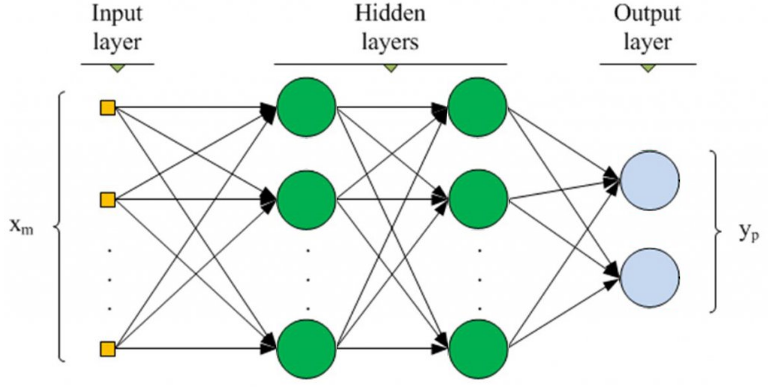To start with, let's understand the term deep learning. It simply means multilayered neural networks. The multiple layers enable deep learning to be an enhanced and powerful form of a neural network. Artificial neural networks (ANNs) have been in existence since the 1950s. They have always been designed with two layers; however, deep learning models are built with multiple hidden layers. The following diagram shows a hypothetical deep learning model:

Neural networks are heavy on computation, therefore the central processing unit (CPU) that can be enabled with a maximum of 22 cores is generally thought of as an infrastructure blocker until recently. This infrastructure limitation also limited the usage of neural networks to solve real-world problems. However, recently, the availability of a graphical processing unit (GPU) with thousands of cores enabled has exponentially powerful computation possibilities when compared to CPUs. This gave a huge push to the usage of deep learning models.
Data comes in many forms, such as tables, sounds, HTML files, TXT files, and images. Linear models do not generally learn from non-linear data. Non-linear algorithms, such as decision trees and gradient-boosting machines, also do not learn well from this kind of data. One the other hand, deep learning models that create non-linear interactions among the features give better solutions with non-linear data, so they have become the preferred models in the ML community.
A deep learning model consists of a chain of interconnected neurons that creates the neural architecture. Any deep learning model will have an input layer, two or more hidden layers (middle layers), and an output layer. The input layer consists of neurons equal to the number of input variables in the data. Users can decide on the number of neurons and the number of hidden layers that a deep learning network should have. Generally, it is something that is optimized by the user building the network through a cross-validation strategy. The choice of the number of neurons and the number of hidden layers represents the challenge of the researcher. The number of neurons in the output layer is decided based on the outcome of the problem. For example, one output neuron in case it is regression, for a classification problem the output neurons is equal to the number of classes involved in the problem on-hand.
